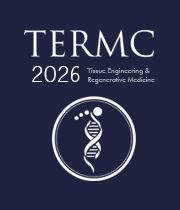Title : AI-integrated high-throughput tissue-chip for brain aging
Abstract:
Cognitive health is associated with the maintenance of a well-functioning cerebrovascular system throughout life. Because the aging population continues to grow worldwide, the risk and impact of age-related diseases is increasing. Over decades of aging research, several key biological hallmarks have been identified, such as oxidative stress, genomic instability, telomere attrition, epigenetic alterations, loss of proteostasis, mitochondrial dysfunction, stem cell exhaustion, and altered intercellular communication. Among these, cellular senescence has emerged as a critical driver of age-related decline. Cellular senescence is recognized as cell fate involving major alterations in genes expression and proliferative arrest rather than apoptosis and has been associated with increased inflammation and tissue dysfunction. Importantly, senescent cells secrete a wide range of senescence-associated secretory phenotypes (SASP), which include proinflammatory cytokines, chemokines, proteases, and a variety of circulating, extracellular exosomal microRNAs(miRNAs). These small non-coding RNAs can act as epigenetic factors regulating post-transcriptionally the translation of different proteins by either inhibiting the translation process or degradation of mRNA. There is little data on the regulatory mechanisms of miRNAs during the process of cellular senescence and the role of miRNAs in cerebrovascular responses to senescence-induced stressors.
Current models, especially traditional 2D in vitro cultures, lack the complexity required to recapitulate the in vivo architecture and function of human brain vasculature, limiting our ability to investigate these processes comprehensively. Animal models, while informative, present their own challenges. Long-term studies in aging animals such as mice are costly, time-consuming, and offer limited translatability due to species differences. 3D bioprinted models paired with microphysiological (MPS) systems mimicking complex vasculature will provide significant advantages compared to existing 2D/3D counterparts, including more relevant representations of cell morphology, proliferation gradients, response to drugs, gene expression, and overall cell behavior.
This research involves integration of microfluidic organ-on-chip MPS systems with human stem cell–derived neural tissues to develop a physiologically relevant, engineered cerebrovascular model.By incorporating automation and artificial intelligence (AI), we aim to establish a high-throughput, animal-free, and fully automatable drug screening platform.There is a new development of treatments using senolytics to reduce cellular senescence, yet there is a lack of knowledge about when it is safe and necessary to incorporate the treatment. The main goal of this paper is to develop an innovative approach by establishing 3D cerebrovascular organoids composed of human-induced pluripotent stem cells (iPSC) derived neurons, astrocytes, and cerebromicrovascular endothelial cells (CMVECs) for studying the impact of senescent cells on differential expression and exosomal secretion of senescent-associated miRNAs in the process of aging and age-related diseases. We will use the generated experimental data to develop and train an AI-agent to perform in silico drug response predictions, which when paired with our high-throughput bioprinted functional organoid tissues fabrication can significantly speed up novel drug discovery for brain aging research, while reducing the current reliance on imperfect models such 2D cell cultures and animal models.



